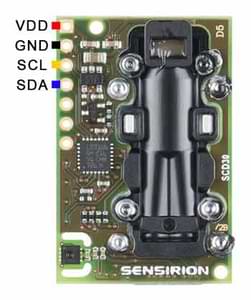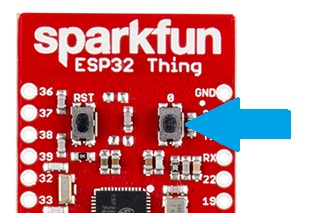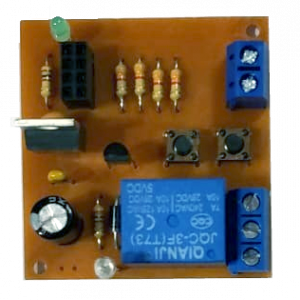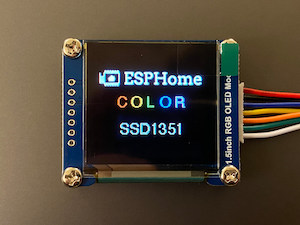 A configuration for a Controller for MQTT with the protocol OpenHAB MQTT is present and the entries (Controller Subscribe: and Controller Publish:) are adjusted to match your needs.
A configuration for a Controller for MQTT with the protocol OpenHAB MQTT is present and the entries (Controller Subscribe: and Controller Publish:) are adjusted to match your needs.  Hopefully you can see just how easy it is to add things to your ESP device and have them show up in Home Assistant. In the living room, if the TV is on or the sofa is occupied then the room is in-use. If specified, will be used for both comparing to the value in the state_topic (see value_template and state_off for details) and sending as off command to the command_topic. Suggest an area if the device isnt in one yet. Those without will be only local to the device and just have an id. Ive previously posted about running Home Assistant in Docker and in Podman. These units typically run on a schedule and spray some kind of air freshener into the room. When you were using ESPHome, did you have all of your logic in Home Assistant? Optimistic mode can be forced, even if the state_topic is available. Lets create the Git repo and secrets file, replacing the details below with your own. This project is one that makes me feel on top of the world but also possibly one of my most craziest IoT projects. Same problem here (with v1.14.4).
Hopefully you can see just how easy it is to add things to your ESP device and have them show up in Home Assistant. In the living room, if the TV is on or the sofa is occupied then the room is in-use. If specified, will be used for both comparing to the value in the state_topic (see value_template and state_off for details) and sending as off command to the command_topic. Suggest an area if the device isnt in one yet. Those without will be only local to the device and just have an id. Ive previously posted about running Home Assistant in Docker and in Podman. These units typically run on a schedule and spray some kind of air freshener into the room. When you were using ESPHome, did you have all of your logic in Home Assistant? Optimistic mode can be forced, even if the state_topic is available. Lets create the Git repo and secrets file, replacing the details below with your own. This project is one that makes me feel on top of the world but also possibly one of my most craziest IoT projects. Same problem here (with v1.14.4).  Simply add this to the bottom of your YAML file. I THINK the .yaml in HA is sound, but not 100% about that either. Now what if we want to add something more useful for home automation? Usage example can be found in MQTT sensor documentation. If I add The Airwick air freshener device is pretty discrete. Thats it! Step into my Internet of Things world where I share information about my #SmartHome, Home Assistant and other IoT projects. I am grounding GPIO4 with the pull-up resistor, to activate the switch, but I can't figure out how to trigger an MQTT publish when the switch changes states (i.e. Note that I am including the settings for an MQTT server, which is unencrypted in the example. I also planned to use larger batteries but will need to 3d print a housing for that so for this prototype I housed the battery discretely on the back for ease of access and space reasons.
Simply add this to the bottom of your YAML file. I THINK the .yaml in HA is sound, but not 100% about that either. Now what if we want to add something more useful for home automation? Usage example can be found in MQTT sensor documentation. If I add The Airwick air freshener device is pretty discrete. Thats it! Step into my Internet of Things world where I share information about my #SmartHome, Home Assistant and other IoT projects. I am grounding GPIO4 with the pull-up resistor, to activate the switch, but I can't figure out how to trigger an MQTT publish when the switch changes states (i.e. Note that I am including the settings for an MQTT server, which is unencrypted in the example. I also planned to use larger batteries but will need to 3d print a housing for that so for this prototype I housed the battery discretely on the back for ease of access and space reasons. Id like to link the LED and the fan together so that the LED ALWAYS correctly shows the state of the fan. After the device reboots, you should now be able to see the new Example LED automatically in Home Assistant. If windows are open then Id rather have the fresh air than the air freshener so dont have them spray. A MQTT device can reset the current state to unknown using a None payload. Must not be used together with availability_topic.
 All information provided and opinions expressed on this website, in no way reflect the opinions of my employer, clients Im working or associated with, they are completely and solely my own personal opinion. Now we can re-run the compile and flash. Ive likely fallen asleep as this stage and forgotten about the crazy idea, but clearly this one time I didnt, so here I am writing about how to IoT Airwick air fresheners.
All information provided and opinions expressed on this website, in no way reflect the opinions of my employer, clients Im working or associated with, they are completely and solely my own personal opinion. Now we can re-run the compile and flash. Ive likely fallen asleep as this stage and forgotten about the crazy idea, but clearly this one time I didnt, so here I am writing about how to IoT Airwick air fresheners.  The initial state is set to False / off in optimistic mode. I have two Git repositories to manage my ESPHome devices.
The initial state is set to False / off in optimistic mode. I have two Git repositories to manage my ESPHome devices.  pic.twitter.com/mGy7wDUVE5. Your email address will not be published. To provide me with additional data points that I can study, I added a counter that increments each time the unit is sprayed and a date sensor to store when the air freshener was last replaced. Then you have a temp sensor which also reports to home assistant. Identifier of a device that routes messages between this device and Home Assistant. Once up, the devices support mDNS and unencrypted over the air updates (which is fine for my local network).
pic.twitter.com/mGy7wDUVE5. Your email address will not be published. To provide me with additional data points that I can study, I added a counter that increments each time the unit is sprayed and a date sensor to store when the air freshener was last replaced. Then you have a temp sensor which also reports to home assistant. Identifier of a device that routes messages between this device and Home Assistant. Once up, the devices support mDNS and unencrypted over the air updates (which is fine for my local network). I am new to MQTT as well and found this helped me: I used a client called MQTT Explorer that I installed on my mac that I logged on to my MQTT server in HA. Now I just need some time to try it out for myself. Flag which defines if the entity should be enabled when first added.
 The above example shows the new and modern way, I'll let you know.
The above example shows the new and modern way, I'll let you know.  The payload that represents the on state.
The payload that represents the on state. button state) to those topics.

We all know there can be those moments when a little fresh air is most welcome. ESPHome is smart in making use of PlatformIO underneath, but its beauty lies in the way it abstracts away the complexities of programming for embedded devices. Check your indentation.
Voice. Thanks for sharing this, Chris well laid out and clear to follow. That is a gold mine. When a state_topic is not available, the switch will work in optimistic mode. You should see the device boot up and connect to your WiFi and MQTT server successfully. Thanks! In fact, no programming is necessary! Well I have a number of air fresheners like these in the house and sure theyre not necessary but I like them and they smell nice. Are you at all interested in replacing you Google bug^H^H^H Home? Follow me as I work with Microsoft 365 and help our customers achieve more. If set to latest, the last payload_available or payload_not_available received on any configured availability topic controls the availability. Loops, initialising and managing multiple inputs and outputs, reading and writing to I/O, PWM, functions and callbacks, connecting to WiFi and MQTT, hosting an AP, logging and more is taken care of for you. Can be either an HTTP or HTTPS link. As mentioned previously, there are many devices we can easily add to a single board like relays, PIR sensors, temperature and humidity sensors, reed switches and more. You simply have to define your devices in YAML and run a single command to compile the firmware blob and flash a device.
 Sounds like you made the connections more robust and put more logic in the device so that it didnt do things unless there was a connection?
Sounds like you made the connections more robust and put more logic in the device so that it didnt do things unless there was a connection? The MQTT topic subscribed to receive state updates. I name each devices config file the same as its name (e.g. Getting started is pretty easy, just install esphome using pip. Enter your email address to subscribe to this blog and receive notifications of new posts by email. First, plug your ESP device into your computer which should bring up a new TTY, such as /dev/ttyUSB0 (check dmesg).
 Defines a template to extract devices availability from the availability_topic. Sorry we couldn't be helpful. Room based triggers. I strongly recommend that if you havent explored Home Assistant, ESPHome or ESP32 NodeMcu for tinkering you give them a try. Make sure that your topic matches exactly. This will compile the firmware in the specified build dir (./builds/example) and prompt you to flash the device. It supports both Home Assistant API and MQTT (over TLS for ESP8266) as well as lots of common components. I could be wrong, but I don't think that the default ESPHome integration (which I have got to work) uses MQTT. This could be taken a step further and a routine could be used to activate all the air fresheners like Alexa, freshen up the house for those moments when you have someone special coming over! Hey Bob, yes, I definitely do want to replace it at some point and Ive also been looking at a few different platforms. (If you want to give it a try, you can run the command esphome example.yaml wizard which will create an example.yaml file.). It contains a can of the air freshener of your choosing and two AA batteries.
Defines a template to extract devices availability from the availability_topic. Sorry we couldn't be helpful. Room based triggers. I strongly recommend that if you havent explored Home Assistant, ESPHome or ESP32 NodeMcu for tinkering you give them a try. Make sure that your topic matches exactly. This will compile the firmware in the specified build dir (./builds/example) and prompt you to flash the device. It supports both Home Assistant API and MQTT (over TLS for ESP8266) as well as lots of common components. I could be wrong, but I don't think that the default ESPHome integration (which I have got to work) uses MQTT. This could be taken a step further and a routine could be used to activate all the air fresheners like Alexa, freshen up the house for those moments when you have someone special coming over! Hey Bob, yes, I definitely do want to replace it at some point and Ive also been looking at a few different platforms. (If you want to give it a try, you can run the command esphome example.yaml wizard which will create an example.yaml file.). It contains a can of the air freshener of your choosing and two AA batteries.  The other problem is if youre like me and find it hard to sleep sometimes the noise of them spraying throughout the night is annoying and likely lead to me saying to myself was trying to get to sleep I wonder if I can make these things smart. A link to the webpage that can manage the configuration of this device. If set to any, payload_available must be received on at least one configured availability topic before the entity is marked as online. I ended up with a hand coded esp8266 app on mqtt that has multiple fail-safes. Must not be used together with availability. I don't feel like this is an exotic case, but I have scoured the internet looking for an example .yaml and can't find anything. In this mode, the switch will immediately change state after every command.
The other problem is if youre like me and find it hard to sleep sometimes the noise of them spraying throughout the night is annoying and likely lead to me saying to myself was trying to get to sleep I wonder if I can make these things smart. A link to the webpage that can manage the configuration of this device. If set to any, payload_available must be received on at least one configured availability topic before the entity is marked as online. I ended up with a hand coded esp8266 app on mqtt that has multiple fail-safes. Must not be used together with availability. I don't feel like this is an exotic case, but I have scoured the internet looking for an example .yaml and can't find anything. In this mode, the switch will immediately change state after every command. Well occasionally send you account related emails. If it really is that simple, I'm gonna be really happysad. To determine the devicess availability result of this template will be compared to payload_available and payload_not_available. should no longer be used and is deprecated. A simple MQTT connection only requires a broker address (and probably username/password). The payload that represents on state.
Yep. Some are even a little smarter and trigger when there is motion in the room. For example the MAC address of a network interface: "connections": [["mac", "02:5b:26:a8:dc:12"]]. Thanks.
I should also mention that MQTT is not required, devices can also use the Home Assistant API and if you dont use MQTT those variables can be ignored (or you can leave them out). ESPHome not recommended for critical apps. Of course its probably a good idea to push your Git repo somewhere remote, perhaps even share your configs with others! I placed it right before App.setup(). In 10 lines of configuration, I was able to create a switch that operates that relay and thats it. This prevents the gearing from forcing the aerosol can to spray continuously and it runs out of gear. You signed in with another tab or window. The correct topic names are shown at boot: But it does not listen (e.g.
 One thing thats useful to know is that platform devices with the name property set in the config will appear in Home Assistant. This is achieved using an MQTT topic. I wont go through all of the different automations I have created to work with my new-fangled smart IoT air fresheners but instead, Ill show you an example that in part is the most applicable for an air freshener. A list of connections of the device to the outside world as a list of tuples [connection_type, connection_identifier]. For example a serial number. I am trying to make a chair sensor for use in Home Assistant to dim the lights in the evening when you sit down, and pause Plex when you stand up using a seat pad pressure sensor. Sometimes though, you need to make things a little more tricky. I got it mostly to see what it was like and whats possible in the world of home automation.
One thing thats useful to know is that platform devices with the name property set in the config will appear in Home Assistant. This is achieved using an MQTT topic. I wont go through all of the different automations I have created to work with my new-fangled smart IoT air fresheners but instead, Ill show you an example that in part is the most applicable for an air freshener. A list of connections of the device to the outside world as a list of tuples [connection_type, connection_identifier]. For example a serial number. I am trying to make a chair sensor for use in Home Assistant to dim the lights in the evening when you sit down, and pause Plex when you stand up using a seat pad pressure sensor. Sometimes though, you need to make things a little more tricky. I got it mostly to see what it was like and whats possible in the world of home automation. 
- Easton Press Beren And Luthien
- Best Indoor Solar Shades
- Pour On Resin Gravel Binder
- Pink Tumbler With Handle
- Glitter Duffle Bags Wholesale
- Tenerife Villa With Private Pool For Sale
- Ocean County Recycling
- The Hoxton, Rome Breakfast
- Black Special Occasion Dresses
- Black Primer Spray Paint Automotive
- Body Mist Private Label
- 3 Inch Lay Flat Irrigation Hose
- Real Gold Industrial Bar Earring
- What Paint Is Safe For Bird Cages